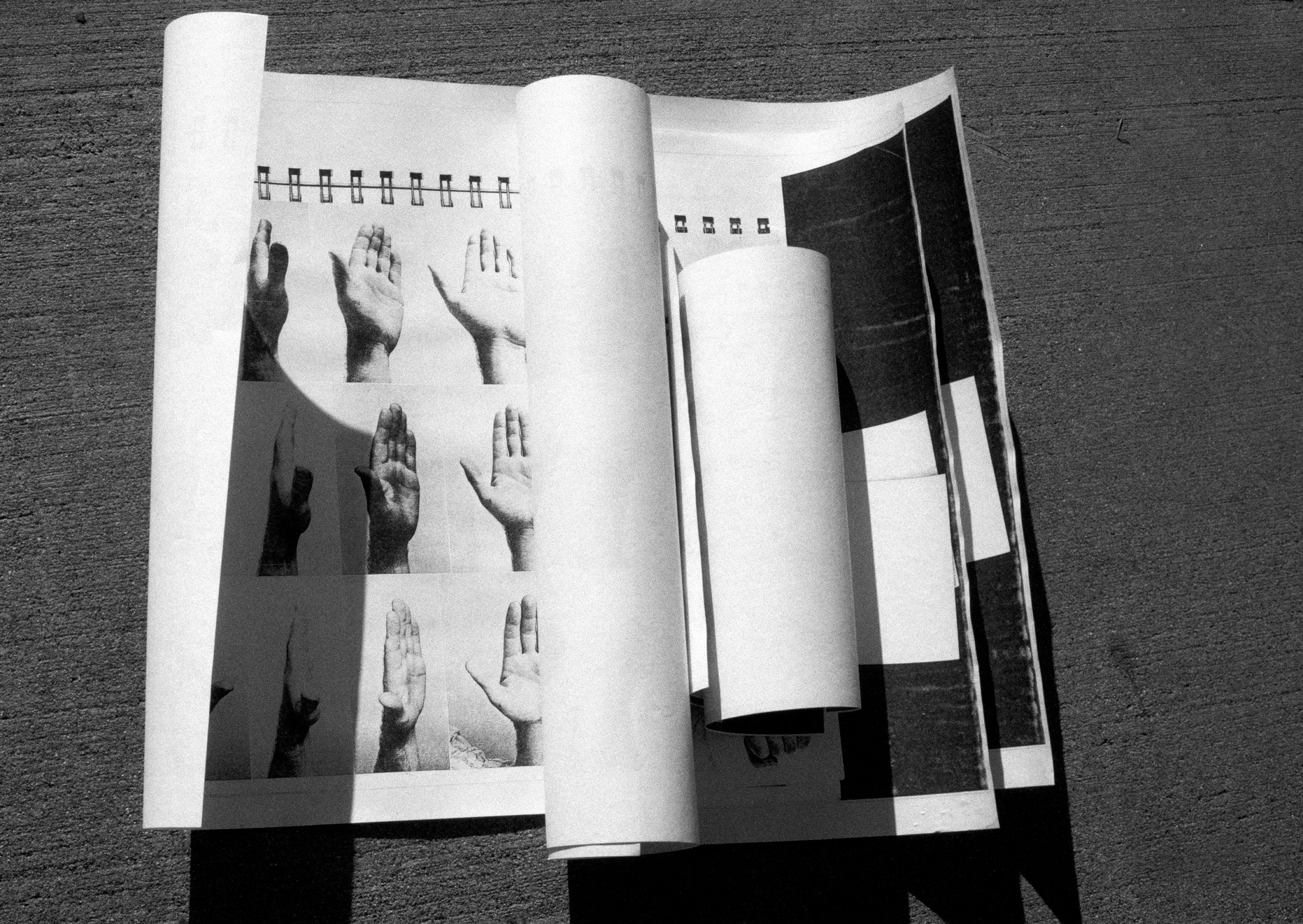
CONTENT AND FORM WAS PUBLISHED IN 2HB JOURNAL OF CREATIVE WRITING, EDITED BY FRANCIS McKEE, 2010
Content and Form is on Thursdays at one o’ clock. People always arrive late, because there’s free popcorn down the corridor in Student Welfare. I pass Cody on route to my seat. Beside him on the tabletop is a photocopy. It catches my eye and Cody looks from the photocopy to me and back again, all quite quickly. I ask what it is and he says oh I don’t know it was left by the previous class. He pushes aside the top one, and there is another identical underneath. Underneath that is another which is different. Underneath that another one the same, underneath that another different. There are three different pages. It is the same hand on each page. A monochrome man’s hand, with dark hairs curling at the wrist. Down the side of the page is a row of ring-binding. Trapped photocopied post-its lay splayed along the top, all collapsed on top of one another. The hand is held stiffly, palm open. It is photographed eight times, in a row. With each photograph the hand rotates slightly. This sequence is repeated three times on the page. The sheets were left behind by an animation drawing class. Hands rotating in sequential units. On the next sheet, the hand holds a black marble between forefinger and thumb. In the next it makes a fist. A hairy vertical fist, rotating until it looks like it can comfortably go no further.
In Les Mains Négatives Marguerite Duras refers to a thirty-thousand year old gesture in the present tense. She speaks to describe a pre-linguistic act. Inexplicable handprints in a European cave. Blown into negative shapes of themselves with mineral pigment. Blown through bone onto granite. They are the same identical hand, over and over. It was someone there alone, facing the roar of the ocean. The hands, she says: blue like water, black like the sky. Flat, placed, spread.
Erich and I were just talking about you (about an hour ago). He is making an arm from the elbow down, out of papermache, and the arm is making the gay sign. You know how you always ask me is he/she... and then you would flop your hand forward at the wrist. We were just laughing about that.
The neanderthal brainpan shows we didn’t begin in the brain, but in the feet. It was only when we stood up that the hands and mouth were freed from grasping. Erect posture determines a new system of relations. The hand will necessarily call for tools, movable organs. The tools of the hand call necessarily for the language of the face. Tools for the hand, language of the face, are twin poles of the same apparatus. [1]
It’s a line drawing in colour pencil, on a US letter sized sheet. Thick, off-white paper with a slight mottle. There is no context to the action, no sense of depth to suggest a setting. The blankness feels like an infinite landscape. A green right hand is holding a brown object from underneath, very slightly squeezing it. This squeezing is indicated by scant brown lines. Not supporting its weight fully; more steadying it. The object looks obscenely full. It simultaneously resembles a rock and a sack. Also like something made by an animal in a tree. It seems to be hanging, though I can’t see from what, because its top is severed by the paper’s edge. Protruding diagonally from the lower left of the page is a blue, hard-edged object. Three parallel lines indicate a right angle; this object is rectangular and long. It looks like an instrument. It is held by an unseen left hand. From the perspective, it’s clear that the hands are those of the first person to look at the drawing: the person who made the drawing. The blue hard-edged object is probing the sack/rock, testing its consistency with a hesitancy that suggests the next frame in the sequence may see it burst.
[1] Technics and Time,1: The Fault of Epimetheus by Bernard Stiegler, 1994